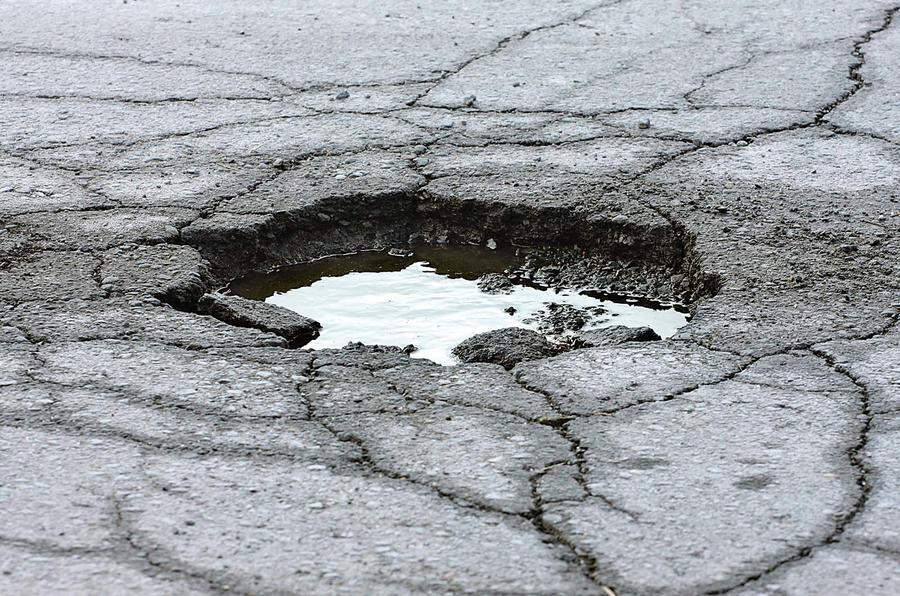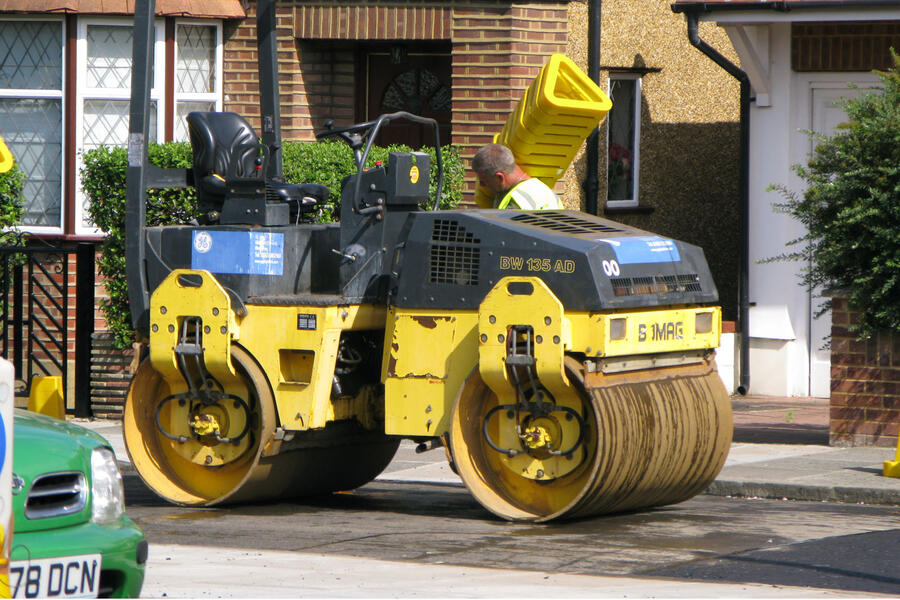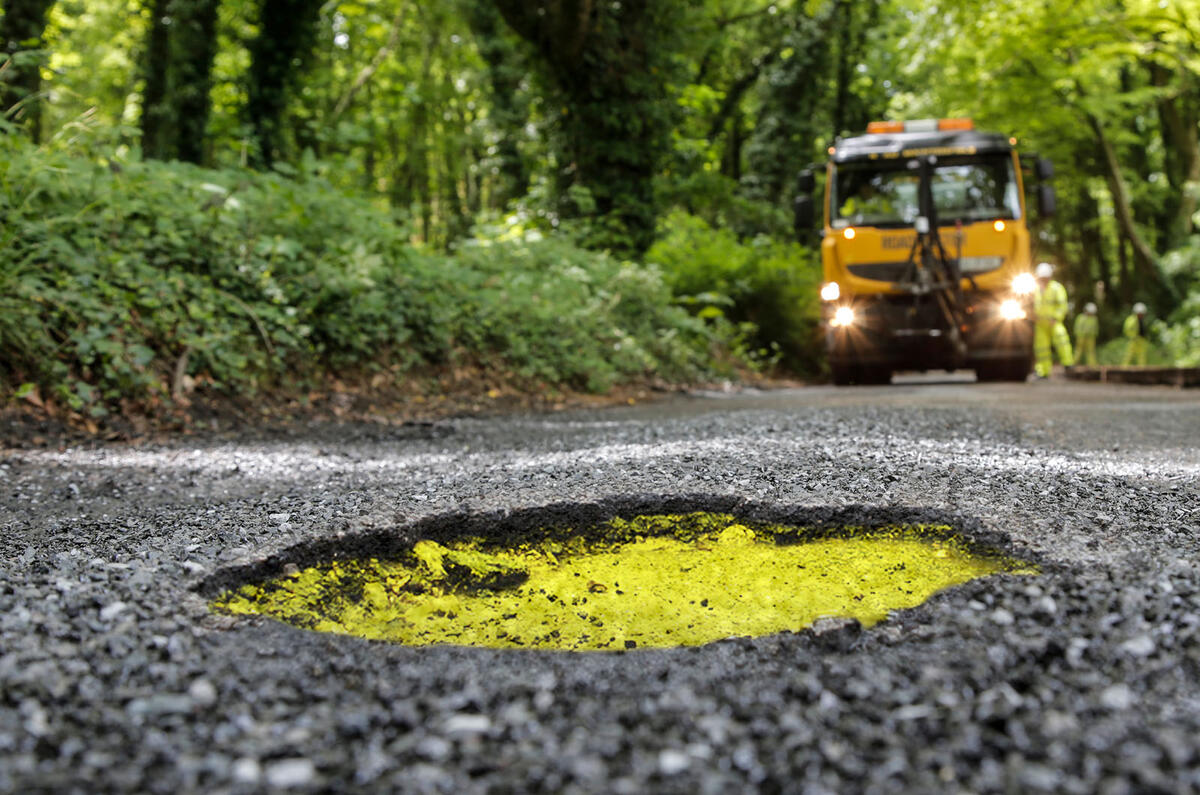In the past 12 months, local councils have spent only a fraction of the millions of pounds given to them to repair potholes, as the amount of money required to repair roads reaches a record high.
In 2020, the government created the Potholes Fund, which each year until 2025 would award £500 million to councils across England to enable them to fix an estimated 50 million potholes.
But according to the latest Annual Local Authority Road Maintenance (Alarm) survey of local authorities by the Asphalt Industry Alliance (AIA), English and Welsh councils spent just £143.5m filling potholes in the past 12 months – at a time when the numbers of potholes and of vehicles being damaged by them have rarely been higher.
The report also found that more than half of the local road network in England and Wales has less than 15 years’ structural life remaining, while the amount needed to fix the backlog of carriageway repairs has increased to a record high of £16.3bn.
The news won’t come as a surprise to members of the All-Party Parliamentary Group for Better Roads. In their most recent report, the MPs criticised the fact that the money in the Potholes Fund wasn’t ring-fenced, with councils free to spend it as they wished.

This contrasts with the Fund’s predecessor, the £296m Pothole Action Fund that covered the period 2015 to 2020, which was provided only for roads maintenance.
As a result, said the MPs, the number of potholes fell by 44% during that scheme’s existence – from 2.38m in 2015 to 1.34m in 2020.
Whereas the Pothole Action Fund had “clear and measurable aims”, the current Potholes Fund isn’t targeted specifically at local roads maintenance, which makes its spending harder to track, said the MPs.
At the same time, overall government funding for local road maintenance has fallen.
The MPs’ fear that insufficient attention is being paid to road maintenance is borne out by the latest Alarm survey, which reports that just 47% of roads are now classified as being in good condition, compared with 51% in 2023, itself down on 62% in 2022. Ideally it would be 72%, believes the AIA.

Comparing the two pothole funds, the MPs said: “All indications are that the Pothole Action Fund made a clear improvement between 2015 and 2020. It was extra funding, but it was allocated directly to local highway maintenance. With the Potholes Fund being merged into more general road funding, this has reversed.”
Their conclusions were echoed by Rick Green, chairman of the AIA, who said: “Our view is that the targeted and accountable nature of the Pothole Action Fund greatly contributed to its effectiveness. It was no surprise to us that the gains made during its life were subsequently lost.”
Shortly after the current Potholes Fund was announced, the government said it was making £5.5bn available for the maintenance and repair of local roads for the same period, 2020 to 2025. This may have given the impression that this money was in addition to the £2.5bn Potholes Fund, but it was actually a part of it. An additional £200m for the Potholes Fund was also announced, but this was likewise part of the £5.5bn.
As with the Potholes Fund, the balance of the £5.5bn fund isn’t ring-fenced.
A spokesperson for the Department for Transport (DfT) said that not ring-fencing the money “means local authorities can choose how they spend it on maintaining their respective networks” and “funding can be spent on all parts of the highway, including bridges, lighting columns and other infrastructure”. To date, around £4.5bn of the £5.5bn has been spent.

Councils must publish regular updates on their proposed works, which the DfT believes will ensure that members of the public can see which roads have been or will be resurfaced in their areas. The first of these reports will go live on council websites this month. Failure to report this information could result in future funds being withheld.
The same conditions and accountability rules apply to the additional £8.3bn of funding redirected from the HS2 railway project to roads, as pledged last November.
Starting in April, councils in England should each receive £150m for 2023 and 2024, with the remainder allocated through to 2034.
The DfT has claimed this will be enough to resurface more than 5000 miles of roads over the next decade.
Transport secretary Mark Harper said it was up to local authorities how they would spend the funding but that its aim was to “improve the quality of road surfaces in the future”, rather than just fixing existing potholes
As drivers endure pothole-riddled journeys each day, they will be hoping that local councils use their freedom to spend the millions of pounds of taxpayers’ money they’ve been gifted to fix many more of them, as well as to prevent future ones developing.
Councils leaving drivers deflated

As councils come under increasing pressure to balance their budgets, drivers can expect less favourable hearings when claiming compensation for damage caused to their cars by potholes.
Already this year, three councils in the south-east have paid out a total of £535k in pothole compensation. Surrey County Council alone has paid out £452k.
This might explain why it recently rejected a claim for compensation by a driver whose tyre was ruptured by a pothole.
Quoting Section 58 of the Highways Act 1980, the council reasoned that because it has a reasonable highway inspection and maintenance regime in operation for its highways network, it wasn’t in breach of its statutory duty.
This common defence may be overturned if the claimant proves that the council hasn’t inspected and maintained the road to the required standards. However, doing so is time-consuming, and councils realise this…
Crackdown on utility companies
Potholes develop for many reasons, but chief among them is poor reinstatement of road surfaces by utility companies.
Last April, the government announced that it would be cracking down on utility companies causing what it called “pothole pain” by ensuring that they must reinstate roads faster and to a higher standard or face regular council inspections costing up to £120 each.
A DfT spokesperson said local authorities are enforcing the new performance-based inspections and implementation is “going well”.
The DfT plans to review the impact of the new regulations on performance at the end of April.




Join the debate
Add your comment
Sounds a bit elitist to me, with hints of jealousy creeping in. An awful lot of cars that are sold these days come from the manufacturer with big wheels with low profile tyres fitted as standard. Should everyone start specifying smaller wheels with bigger tyres? What about all the large wheels already out there? Who is going to pay to have them replaced with new tyres?
If there is a hole in he road, it is not fault of drivers of cars with bigger wheels and low profile tyres if they don't see them until it is too late.
Our Village has been promising Traffic Calming and making the Village a nice looking place to drive through, but the council can't fix a date to start doing because their budget keeps getting cut, and as mentioned, when they are doing something major, why don't other essential services get in there if there's a need for replacing old or defective stuff?we could write pages of criticism of our councils, but they've either gone bankrupt or their budgets are getting smaller caused by National governments inept running of our economy.
Its ridiculous that the Government changed the rules regarding ring-fencing this pothole cash, we all know that councils are hard up so will try to squirrel some of it away to other things wherever they can. The funds should be specifically for good quality repairs and proper resurfacing of local roads, and if the local authorities don't spend it on that then they lose it. The point about utilities is very important too, they should be held accountable for the quality of their patching up for a certain time period, and it would be nice if they liaised with the councils so that they don't immediately dig up newly surfaced stretches as they seem to do so often at present.